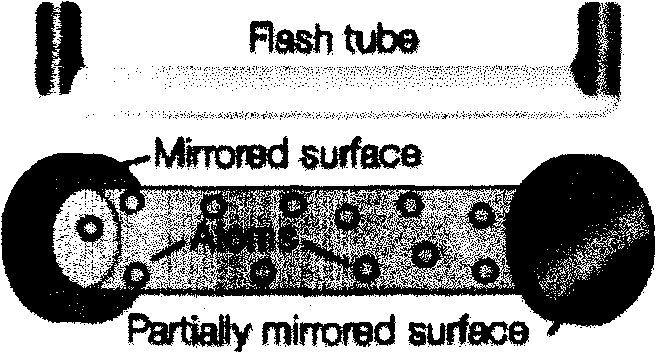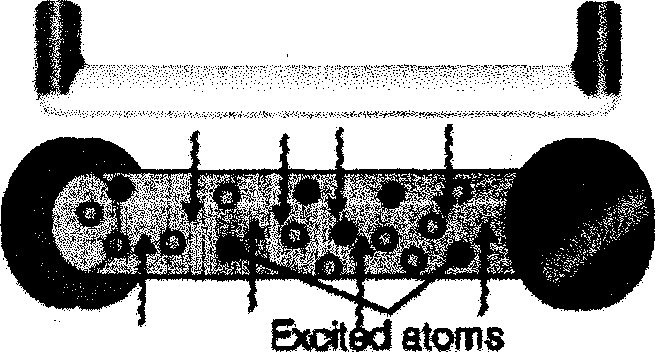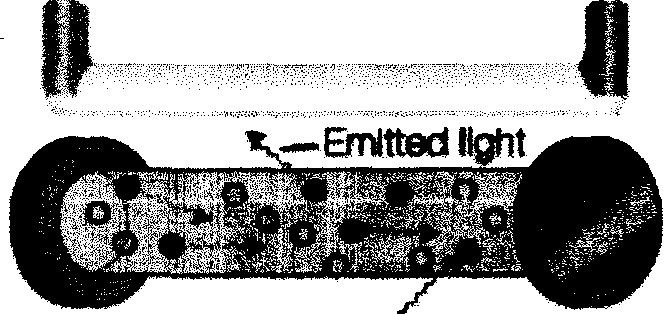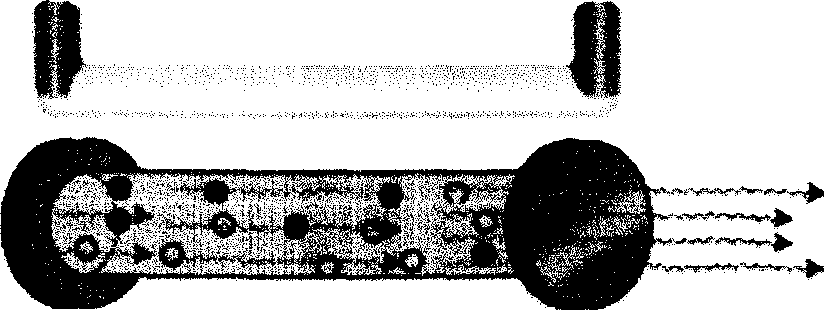
- •Л.П. Маркушевская, с.В. Шенцова, е.В. Соколова optics:
- •Contents
- •The History of Optics
- •Understanding a printed text
- •Comprehensive reading The History of Optics
- •Check your understanding
- •Exercise 2. Complete the sentences:
- •Increase your vocabulary
- •Chapter I Classical (Geometrical) Optics
- •Comprehensive reading From the History of Geometrical Optics
- •Check your understanding Exercise 1. True or false?
- •Exercise 2. Choose the correct answer.
- •Increase your vocabulary
- •A virtual image …
- •Language activity
- •Unit 2 word-study
- •Understanding a printed text
- •Reading for precise information Nature of Light and Color
- •Laws of reflection:
- •Laws of refraction:
- •Check your understanding
- •3 Laws
- •Increase your vocabulary
- •Language activity
- •Unit 3 word-study
- •Understanding a printed text
- •Scan-reading Optical Instruments
- •Check your understanding
- •Increase your vocabulary
- •Language activity
- •Exercise 4. Summarize your knowledge of Past Simple or Past Continuous. Choose the correct tense.
- •Unit 4 word study
- •Understanding a printed text List of Terms:
- •Reading and translating the text Lenses
- •Check your understanding
- •Increase your vocabulary
- •Language activity
- •Unit 5 word study
- •Understanding a printed text List of Terms:
- •Read the text and entitle it
- •Check your understanding
- •Increase your vocabulary
- •Language acitivity
- •Review of the chapter I
- •Supplementary tasks
- •Improve your translation practice task 1
- •The History of the Telescope
- •Exercise 1. Rearrange the sentences in the chronological order.
- •Holography
- •Illumination, never remove protective cover from the
- •Астрономические наблюдения объектов в широком диапазоне длин волн
- •Chapter II Fiber Optics Unit 1
- •Comprehensive reading The History of Fiber Optics
- •Check your understanding Exercise 1. Answer the following questions.
- •Increase your vocabulary Exercise 1. Compare the two columns and find Russian equivalents.
- •Exercise 2. Match the antonyms.
- •Language activity Exercise 1. Summarize your knowledge of Passive Constructions and translate the following sentences.
- •Fiber Optic Systems
- •Fiber Optic Technology
- •Check your understanding
- •Exercise 2. Complete the sentences with words from the text.
- •Increase your vocabulary
- •Language activity
- •Unit 3 word-study
- •Understanding a printed text
- •Reading and translating the text
- •Check your understanding Exercise 1. Which title better suits the text?
- •Increase your vocabulary
- •Language activity
- •Exercise 2. Which of the italicized words in each sentence is the predicate?
- •Unit 4 word study
- •Read – reread;
- •Understanding a printed text
- •Comprehensive reading Optical Fiber Applications
- •Check your understanding
- •Increase your vocabulary
- •Language activity
- •Rewiew of the chapter II
- •Supplementary tasks
- •Improve your translation practice task 1
- •Fiber Optic Economics
- •Exercise 1. Answer the questions.
- •Exercise 2. Translate the following parentheses into Russian.
- •How Optical Fibers Work
- •Chapter III
- •Word study
- •Understanding a printed text
- •Amplifier – усилитель
- •Reading for discussion Maser-Laser History
- •Check your understanding
- •Increase your vocabulary
- •Language activity
- •Unit 2 word study
- •Understanding a printed text
- •Reading for precise information Types of Lasers
- •Solid-State Lasers
- •Gas Lasers
- •Semiconductor Lasers
- •Free-Electron Lasers
- •Liquid Lasers (Dye Lasers)
- •Chemical Lasers
- •Check your understanding
- •Increase your vocabulary
- •Language activity
- •Comprehensive reading Solid - State Lasers
- •Semiconductor Lasers
- •Check your understanding
- •Increase your vocabulary
- •Adjectives
- •Language activity
- •Unit 4 word-study
- •Understanding a printed text
- •Comprehensive reading Gas and Molecular Lasers Gas Lasers
- •Fig.1. Construction of He-Ne laser
- •Molecular Lasers
- •Check your understanding
- •Increase your vocabulary
- •Language activity
- •Exercise 3. Summarize your knowledge on non-Finite forms. Define the form of the underlined words (Infinitive, Participle - I, Participle - II, Gerund). Translate the sentences.
- •Unit 5 word study
- •Verb – noun
- •Understanding a printed text
- •Scan-reading Laser Applications
- •Industry
- •Scientific Research
- •Communication
- •Medicine
- •Military Technology
- •Laser Safety
- •Check your understanding
- •Increase your vocabulary
- •Exercise 2. Translate the following word combinations with Participle II as an attribute.
- •Language activity
- •Exercise 3. Cross out “that”, “who”, “which”, “when” if one can manage without them. Underline the subject in the second sentence.
- •Supplementery tasks
- •Improve your translation practice
- •Лазерная сварка
- •Лазеры в медицине
- •How a Laser Works The Basics of an Atom
- •The Connection Between Atoms and Lasers
- •Understanding a printed text
- •Lasers in Communication
- •Laser Uses
- •Appendix I Химические формулы
- •Appendix II
- •Appendix III Business Communication
- •I. Introduction. Writing and Speaking – Your Keys to Business Success.
- •II. The job campaign
- •Working Experience
- •Curriculum vitae
- •Education
- •III. Business letters
- •I. Introducing your firm (the body the message of a letter).
- •II. Official Invitations
- •III. Request
- •IV. Claim, protest!
- •V. Gratitude, thanks.
- •VI. Regret, apology
- •Supplementary reading appendix IV Albert Einstein
- •Arthur l. Schawlow
- •Charles h. Townes
- •Aleksandr m. Prokhorov
- •Nicolay g. Basov
- •Ted Maiman and the world's first laser
- •Dictionary
- •Haze, n – туман, дымка
- •Observe, V – наблюдать
- •Optics, n – оптика, оптические приборы
- •Literature
Laser Uses
1. Eye surgeons can use laser beams to "weld" detached retinas back onto the eyeball without cutting into the eye. The laser beam is directed onto the retina through the pupil of the eye. Scar tissue forms at the impact site of the laser beam and at that point fastens the retina to the inner surface of the eye.
2. Laser beams have been used for industrial purposes. The diamond dies through which extremely thin wire filaments are drawn can be drilled with a laser beam. The already narrow beam of light can be further reduced to a diameter of less than 0.001 inch. The energy concentrated in this tiny beam is known to be sufficient to cut through diamond.
3. Laser beams are sometimes used as reference points* in building construction. They accurately mark straight lines along the course of large buildings. A laser beam is used by scientists to detect whether portions of a two-mile-long particle accelerator in Stanford, California, move out of alignment.
4. Three-dimensional images can be produced by laser beams. Holography, or laser photography, relies on the coherent beam of laser light to produce a hologram, a three-dimensional information record of an object on photographic film. A portion of a laser beam is reflected off the object and into the path of a reference beam of unreflected laser light. The interaction of the two beams produces a unique interference pattern in the film. When another laser beam is aimed through the hologram's interference "picture," a three-dimensional image of the original object is reconstructed. The image looks like a picture or a slide.
5. The distance between the Earth and the Moon has been measured accurately by means of a laser beam. Scientists recorded the time taken for a laser beam to bounce off a reflector placed by astronauts on the moon. Knowing the speed of light in a given period of time, scientists were able to compute the distance with accuracy.
Exercise 1. Answer the questions.
What are main applications of lasers?
What can you tell about measuring distances by means of a laser beam?
What do you know about medical uses of lasers?
TASK 9
Read and entitle the text.
To produce laser light it is necessary to have a pair of mirrors at either end of the lasing medium. These mirrors are often known as an optical oscillator due to the process of oscillating photons between the two mirrored surfaces. The mirror positioned at one end of the optical oscillator is half-silvered, therefore it reflects some light and lets some light through. The light that is allowed to pass through is the light that is emitted from the laser. During this process photons are constantly stimulating other electrons to make the downward energy jump, hence causing the emission of more and more photons and an avalanche effect*, leading to a large number of photons being emitted of the same wavelength and phase.
Below is a graphical illustration of what has been detailed above. The graphics illustrate how laser light is created using a ruby laser, the first folly functioning laser. (Theodore Maiman invented the ruby laser on May 16th 1960 at the Hughes Research Laboratories.)

Fig.1. Schematic of Laser in Non-Lasing State.

Fig.2. Schematic Illustrating the Excitation of Atoms Using Light Source.

Fig.3. Schematic Showing Photon Emission.

Fig.4. Schematic Showing the Stimulated Emission of Further Photons.

Fig.5. Schematic Showing Column of Laser Light Leaving Optical Osculate.
*avalanche effect – лавинообразный эффект
Exercise 1. Say what you have learnt about:
a ground-state energy level and an excited level.
the properties of laser light.
the stimulated emission.
